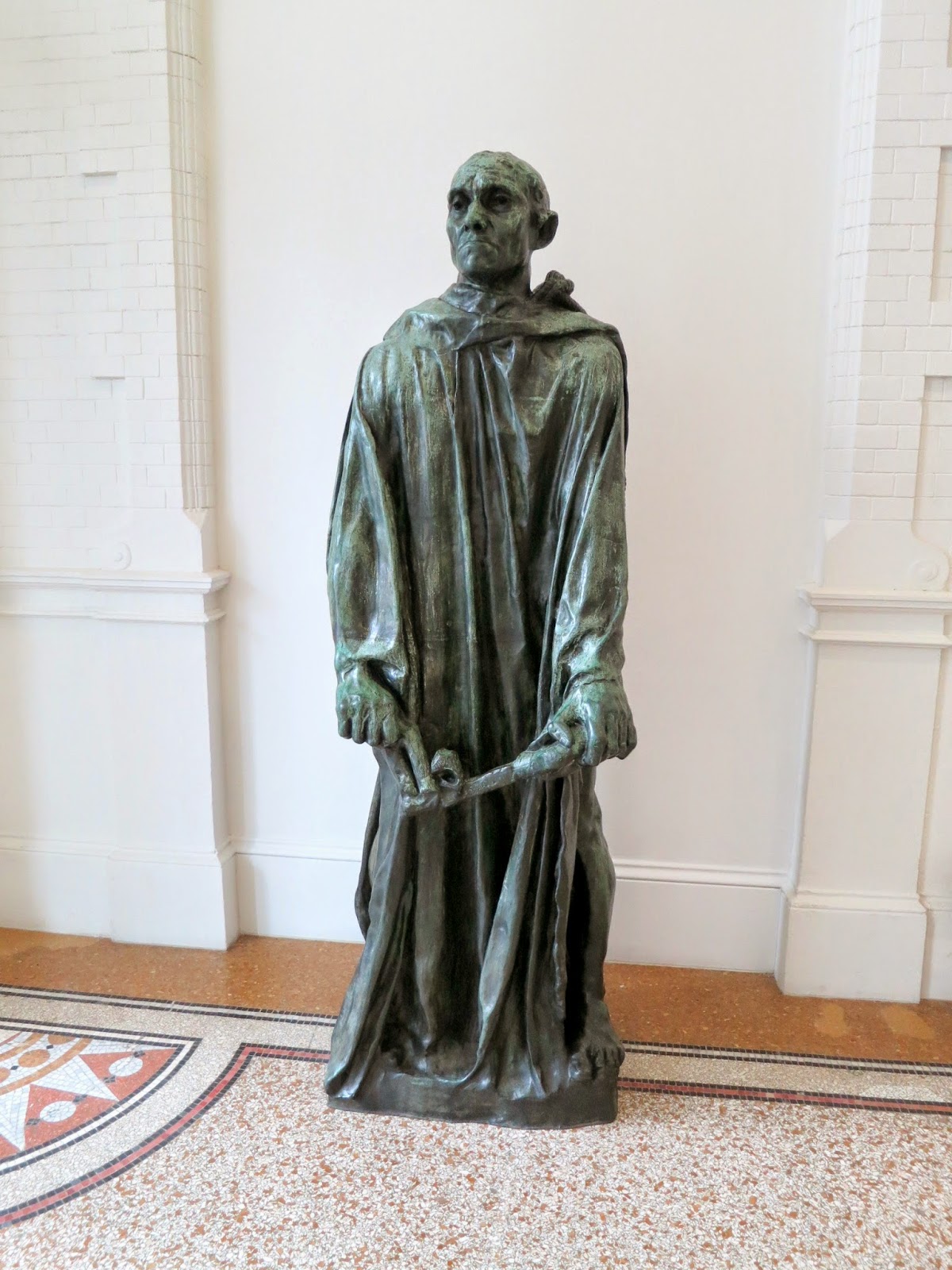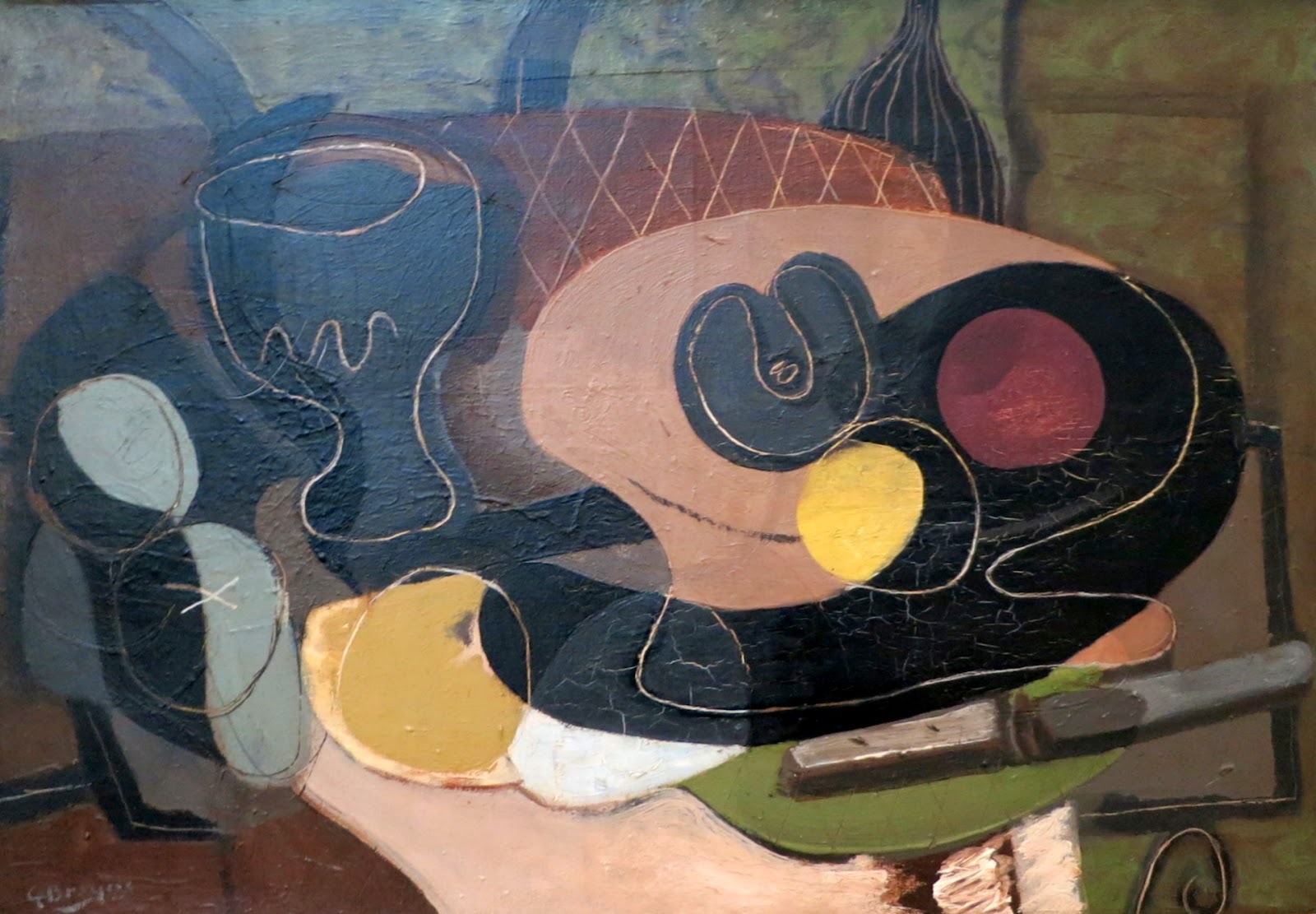The Stedelijk Museum in Amsterdam, Art before 1960.
Auguste Rodin, Jean d'Aire, 1884-86 (patinated bronze)
looking closer
Asger Jorn, In the Wingbeat of the Swans, 1963, (oil on canvas)
A combination of figuration and abstraction. Two figures can be discerned beneath red-tinged skies on a typically hilly Scandinavian landscape.
Jaap Wagemaker, Couleur Plomb, 1958 (mixed media)
'A painting comes into being; there isn't always a preconceived idea' said Wagemaker. In its shape and colour Couleur Plomb shows a longing for freedom that is characteristic of painting in the years following WWII.
Pablo Picasso, Seated Woman with Fish-Hat, 1942 (paint on canvas)
Jackson Pollock, Reflection of the Big Dipper, 1947 (paint on canvas)
Built up layers of paint with dripped enamel as the final touch. It was in 1947 that Pollock traded in his brushes for sticks, trowels and knives and began adding foreign matter such as sand, broken glass, nails, coins, paint-tube tops and bottle caps to his canvases, a process which earned him a unique position in the Abstract Expressionist movement.
Pablo Picasso, The Aubergine, 1946, (gouache on paper on canvas)
Julio Gonzalez, La Montserrat, 1935-37, (patinated iron, wood)
A condemnation of the Spanish Civil War, this sculpture was exhibited alongside Guernica in the 1937 World Fair in Paris. This peasant woman is both militant and vulnerable, grasping a cycle in one hand while clutching a child protectively in the other.
Georges Braque, Nature Morte au Couteau, 1932, (oil on canvas)
Pablo Picasso, Heads, 1943, (oil on paper on canvas)
Interbellum:
After the predominantly abstract work of the avant gardes of the early 20th century, during the Interbellun - the years between the two World Wars - figuration made a reappearance in European art. Besides the familiar themes such as self-portraits and city life, many artists concentrated on social issues: poverty, war and unemployment - harsh realities of the socio-economic crisis. The work of these artists presents a portrait of an oppressive era. The new realistic tendencies found expression in the movements known as New Objectivity and Magic Realism. However, for many artists, this did not signify a return to the realism of pre-abstract art. What was new was the flatness with which this new generation of artists depicted their rediscovered reality.
Charley Toorop, Working class woman, 1943, (oil on canvas)
Carel Willink, Bad Tidings, 1932, (tempera and oil on canvas)
Johan Van Hell, Musical Saw, 1934, (oil on canvas)
Charley Toorop, Self-Portrait with Hat and Veil, 1938, (oil on canvas)
Charley Toorop, one of the most influencing figures of Dutch realist painting of the 20th century, created self-portraits throughout her life. The close-up composition and framing of this portrait are reminiscent of film stills, revealing the influence of the moving picture on her work.
Jean Brusselmans, Woman on a Sofa, 1937, (oil on canvas)
Brusselmans developed a distinctive style typified by a composition of geometric lines, almost entirely flat planes of colour and hard, emphatic contours.
Max Beckmann, Double Portrait of the Artist and his Wife Quappi, 1941, (oil on canvas)
In 1937 Beckmann fled Germany on the day Hitler opened the travelling exhibition Entartete Kunst where modern art was presented that the Nazis labelled 'degenerate', 'amoral', 'un-German' and 'unaesthetic'. He fled to Amsterdam.
Stanley Spencer, Self-Portrait, 1936, (oil on canvas)
Nola Hatterman, On the Terrace, 1930, (oil on canvas)
Hatterman painted in the style known as the New Objectivity in which objects disclose details of the subject's background. By including the newspaper open to advertisements of cabaret performances she indicates that the subject was a cabaret performer. Raised in what was considered a 'colonial milieu', Hatterman said that she felt black on the inside.



















I love that last image. I can almost see his fingers twitching in time to his humming!
ReplyDeleteYes, it's a great painting: the hands, the face, the expression, the colours. I had never come across Hatterman's work before but I guess that's the exciting thing about going to museums in other countries - you find out about their art.
ReplyDelete